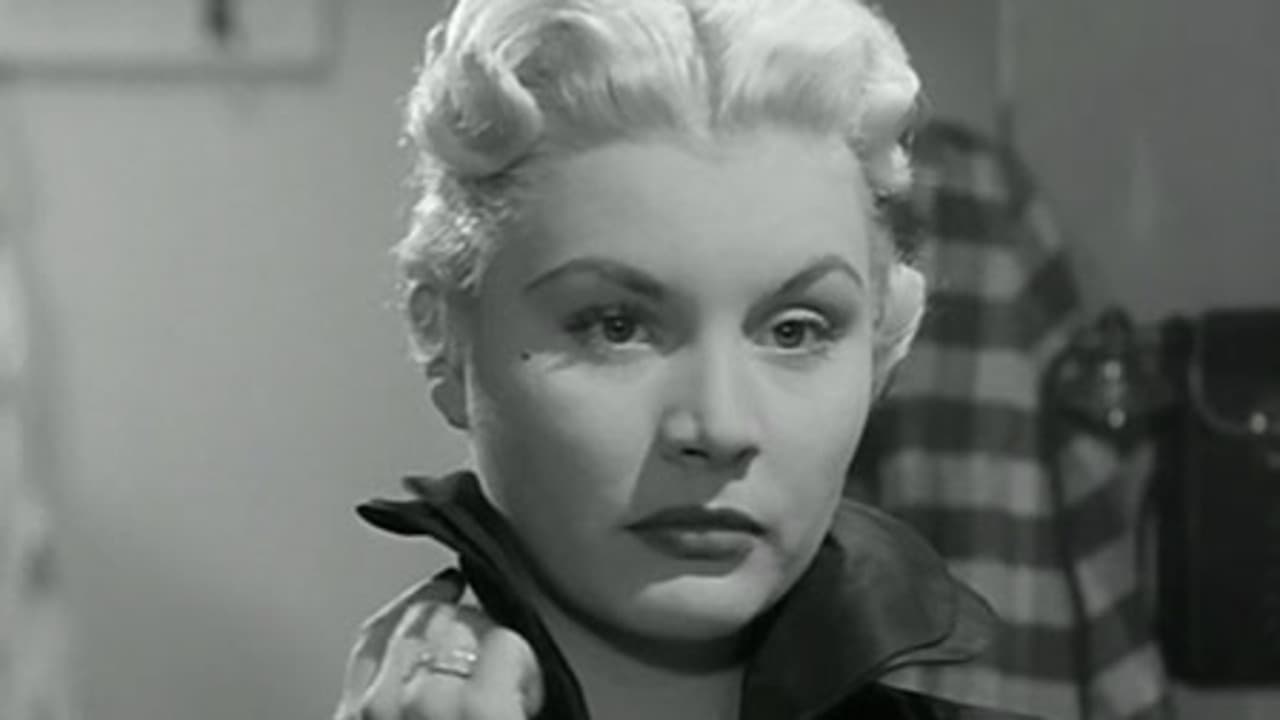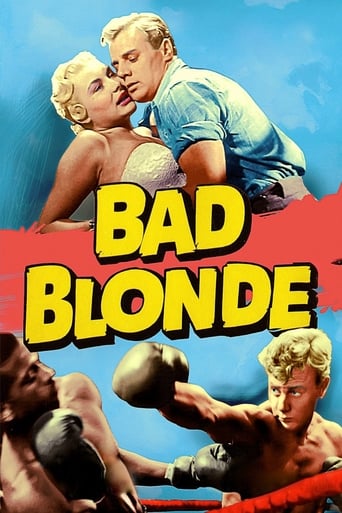



hyped garbage
Better Late Then Never
This is a tender, generous movie that likes its characters and presents them as real people, full of flaws and strengths.
View MoreIt really made me laugh, but for some moments I was tearing up because I could relate so much.
View MoreFrom the moment you see her naked leg while her hands roll a stocking up her leg, you know that she's truly bad to the bone. The camera finally shows the face, not unattractive, but certainly no Marilyn either. Married to a much older boxing trainer, she at first ignores his protégé Tony Wright but when she sees him fight, her juices begin to flow as her sexuality takes over her scheming mind. Even telling Wright off in a later scene and lying about her lust, you know she's got seduction on her mind, and ultimately murder.Barbara Payton is rumored to have been equally a femme fatal as much off screen as she was on, and that adds an intriguing twist to her wicked women. Obviously a rip-off of other similar film noir, this is more camp and a guilty pleasure than a classic. When Payton gets kissed by her obese slob of a husband (Frederick Valk), her disgust oozes off the screen with pure venom. The camp explodes when Valk's suspicious family arrives after the comically filmed "tragedy". His aging stereotypical mama, looking like something out of ancient Greek tragedy, and his equally severe looking sister adds to the over-top melodrama.This is B bad movie making at its most delightful with one dimensional performances and clichéd dialog that is laughably bad. Yet, the camera work is really good, so you can see this as being pretty influential with the new wave directors getting to make their mark on film.
View MoreThe curious "Bad Blonde" (1953) was allegedly based on the 1949 novel "The Flanagan Boy" (also the movie's UK release title) by Max Catto. Many reviewers have pointed out similarities between this movie and more famous film noir outings like "The Postman Always Rings Twice", but the work the Richard Landau/Guy Elmes screenplay most closely resembles is the 1952 novel, "High Wray", by Ken Hughes, which Hughes himself filmed in 1954. The basic plot is virtually identical. Unfortunately, Tony Wright makes a very poor fist of the central role (well played by Alex Nicol in the Hughes version), while Frederick Valk is so distressingly hammy and super-boring as the husband, all our interest shifts to the super-glamorous siren, so enticingly enacted by Barbara Payton (who certainly gives Hillary Brooke a run for her money). Sid James, who was so brilliant as the husband in the Hughes version, in this one has the Peter Illing role, which he plays with lackluster enthusiasm. Alas, the wife has no other suitor here but the stolid-as-a-stalagmite hero, so the Paul Carpenter role was turned into a boring and totally extraneous pal of the Illing character, here portrayed with tedious vitality by John Slater. And to top it off, instead of an astute, charismatic police inspector played by Alan Wheatley, we are now regaled with dull old George Woodbridge. Needless to say, aside from his loving close-ups of Barbara Payton, Reginald Le Borg's tired, static, stolidly routine, barely competent direction isn't a patch on the grippingly stylish, atmospheric effects so brilliantly achieved on much the same budget by Ken Hughes.
View MoreI saw this under its alternate title "Bad Blonde." Though Barbara Payton is billed before the title, I was confused: Yes, the actress had quite a reputation. She had life that was messy and ultimately very sad. It was more sordid and more interesting than the tabloid girls of today.And the character she played was bad, to be sure. Yet, the movie makes much more sense under its original title: It's primarily about the character played by Tony Wright. Ms. Payton wears some alluring costumes but we hardly ever see Wright with his shirt on. When he's not boxing, he's swimming.It's a sad story. Sort of a film noir, yes. But we feel bad for the basically decent people who are trampled on because of others' greed and desires. Frederick Valk is excellent as Giuseppi, the man drawn into representing the title character in his fight career.The plot reminded me, particularly in his character, of Tennessee Williams" "Orpheus Descending." An interesting movie, if ultimately not an especially good one.
View MoreBad Blonde is a great title for a very average movie. It's also the first of the Hammer noirs made in the 1950s I've had a chance to watch. I've always been a fan of Hammer's horror output, so it's a treat to get the opportunity to see what the studio was doing pre-1957. The movie tells the (somewhat unoriginal) story of young up-and-coming boxer who gets mixed up with his promoter's steamy, blonde wife. She bends him to her will and uses him to get what she wants even if that means committing murder. In a broad, general sense, Bad Blonde kept me entertained throughout. Director Reginald Le Borg keeps things moving at a good pace. The film looks good and the country estate set is a standout. And the movie features a wonderful performance from Sid James. The man carries much of the film on his own. Unfortunately, I can't say the same about some of the rest of the acting. The problems I have with Bad Blonde that make it just barely above average relate almost completely to the two leads. Tony Wright and Barbara Payton, are terribly unconvincing. For Wright, this was his first film, so I can forgive some of his stiffness. But for Payton, Bad Blonde was supposed to something of a return to glory. After only four years of making films, she was already washed-up by 1953. Her story may be a sad one filed with every possible form of self-destruction imaginable, but it doesn't change my opinion of her acting. With the exception of a few memorable moments, she doesn't come across as the smoldering sexpot she's supposed to be. To the contrary, I actually found her quite unappealing.Even though Bad Blonde didn't knock my socks off, I'm looking forward to giving the other five films in the new Hammer Film Noir Collector's Set a chance. At a minimum, and if for no other reason, it's interesting to see how the American B-noirs were translated to Great Britain.
View More